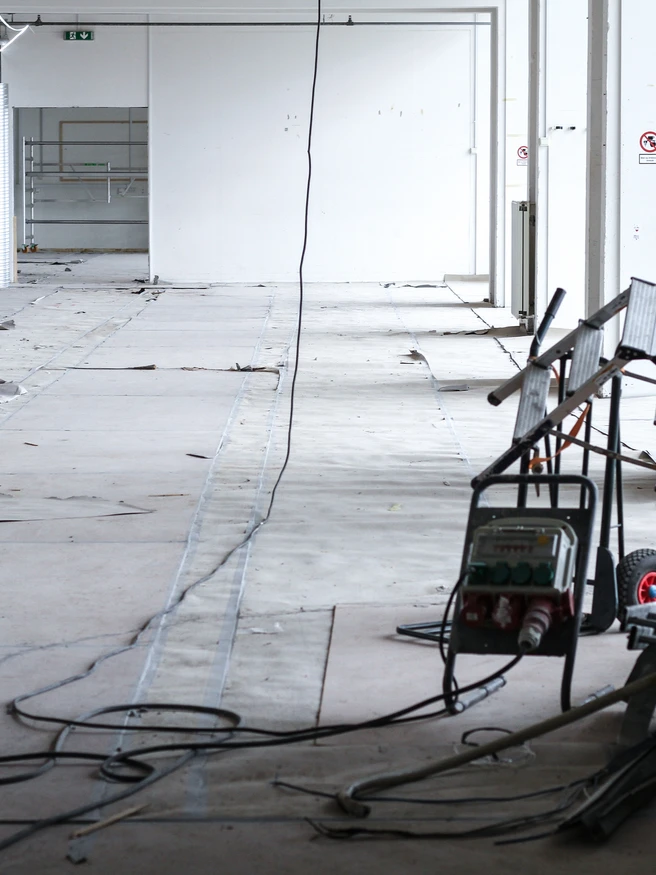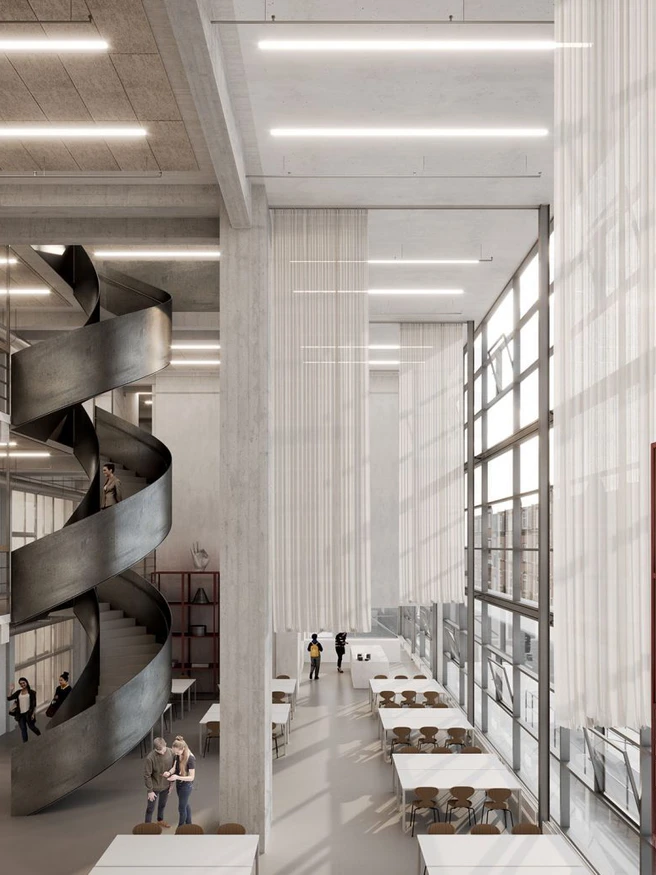History

The history of Kolding School of Design




-
1967
In August 1967, the school, then known as Kunsthåndværkerskolen, opens in Kolding with a textiles programme (printing and weaving) and an advertising programme. The school is established in Vesterbrogade as a department under Kolding Tekniske Skole. The following year, the school moves to premises in Brdr. Volkerts Fabrikker, and a ceramics programme is added. At this time, the school has around 100 students. -
1970-1990
In 1970, yet another programme is added: Clothing. In 1989, the programme is restructured and improved, and extended from four years to five. After the first phase of a new educational structure, the school now includes a one-year interdisciplinary basic school, four two-year programmes (Clothing, Graphic Design and Illustration, Ceramics and Textiles), and three two-year specialist departments (Department of Industrial Design, Department of Unique Design and Department of Visual Communication).
-
1993
Graphic Design and Illustration, the Department of Visual Communication, Ceramics and parts of the Department of Unique Design move to Saxovej. Bdr. Volkerts Fabrikker now houses administration, the basic programme, Clothing, Textiles, the Department of Industrial Design, parts of the Department of Unique Design, workshop, auditorium and canteen. In 1995, a new programme in Interactive Multimedia is set up.
-
1996
In January 1996, the school breaks away from Kolding Tekniske Skole to become an independent institution under the Danish Ministry of Education. The school acquires the Solar building in Ågade and organises an architectural competition to renovate and refurbish the building.
The content and structure of the programme is changed once again, resulting in the Department of Industrial Design and the Department of Unique Design being replaced by the Department of Product Design. The Department of Form and Theory is established, while the Department of Visual Communication is maintained. The objective is greater interdisciplinary collaboration, with more emphasis on theoretical aspects and form.
-
1998
The school moves into the new building at Ågade 10, gathering all of the school’s departments under one roof. At the same time, the school changes its name to Designskolen Kolding / Kolding School of Design.
-
2002-2007
In 2002, the government and the political parties enter into an agreement for the artistic programmes under the Ministry for Culture which mean that, for four years, the school is guaranteed a steady income provided it meets certain requirements. The first actual research project is initiated.
The following year, the school inaugurates an extension including workshops, study areas and a photo studio. At the same time, a new Executive Order is approved for Bachelor’s and Master’s programmes. The first four-year performance contract is entered into with the Ministry of Culture, which decide to close Ceramics in 2007.
-
2008-2010
In 2008, two large subject-specific departments are set up: the Department of Communication Design, comprising Graphic Design, Illustration and Interaction Design (formerly Interactive Media) and the Department of Product Design with Industrial Design, Fashion and Textiles. Research becomes part of the new Faculty for Education and Research, which also handles study administration and cross-disciplinary teaching.
The school undergoes an accreditation process along with an assessment of its research activities, resulting in the school being granted university status in 2010, and thus able to offer a three-year Bachelor’s programme, a two-year Master’s programme and then the possibility of a PhD programme.
-
2011
Through the business development project D2i – Design to Innovate, the school becomes part of a major initiative to create growth, innovation, and jobs in small and medium-sized enterprises. From 2011 to 2020, the school facilitates programmes for more than 800 companies and even more employees—workshops and courses centred around design as the key to skills development and business growth. This EU-funded project laid the foundation for the school’s focus on continuing and further education, which gained significant momentum with the launch of a diploma programme in 2018.
-
2014
In connection with the presentation of the Finance Bill for 2014, the school is able to set up an Accessory Design programme (Bachelor’s and Master’s) with a focus on shoes, bags and jewellery.
-
2017
In collaboration with the LEGO Foundation and the LEGO Group, the school establishes the world's first Master's degree in Design for Play. Through this new educational programme, LEGO and Kolding School of Design aim to jointly contribute to a more playful and thus creative society.
-
2018
The school launches a revised Master's degree programme, which integrates classic design skills with cross-disciplinary specialisation. This means that graduate students specialize in either Design for People (social design), Design for Planet (sustainability), or Design for Play (play and design) and develop their professional skills in relation to either Fashion Design, Textile Design, Industrial Design, Communication Design, or Accessory Design. The new structure makes it even more possible to train designers with professional depth and broad competences to collaborate across professional groups. Designers with a sharp profile who can help challenge companies and public institutions in their way of seeing the world and in collaboration with them create new, exciting solutions.
2018 is also the year that the school launches a new diploma programme in strategic design and management. The education is tailored for consultants, managers and middle managers as well as for teachers in both the private and public sector and provides skills to work at the crossroads between design, innovation and management.
-
2020
In June 2020 the school is granted a positive institution accreditation. This means that the school officially meets the criteria for offering excellent and relevant university programmes in an environment that supports openness and dialogue. A positive institution accreditation gives the school the responsibility and freedom to implement a system, which ensures the quality and relevance of its programmes as well as the possibility to set up new programmes and adjust existing ones.
-
2021
The school expands its continuing and further education activities by offering courses focused on design thinking and methods, as well as facilitating tailored programmes for both public and private organisations. Both the courses and programmes combine theory with practical application, where participants learn to navigate user journeys, develop ideas, and translate them into action through prototyping and visualisation. The focus is particularly on solving complex problems and equipping participants with the tools to challenge their own and others' assumptions, as well as to facilitate change processes.
-
2023-2024
The school's building at Ågade 10 undergoes an extensive transformation to create the best conditions for creative expression. Technological development requires future-proof workshop facilities, while the school's status as a university has given a big push to research, which also requires physical spaces for co-creation.
The A.P. Møller Support Foundation contributes DKK 24 million to the renovation, the Aage and Johanne Louis-Hansen Foundation contributes DKK 15 million, and the Augustinus Foundation contributes DKK 11 million. Kolding School of Design's own financing amounts to DKK 17.8 million. The renovation takes just over 1 1/2 years and is carried out by CUBO Architects, with Hansen & Knudsen A/S as the main contractor and Tegnestuen Mejeriet as the project management consultant. In connection with the rebuilding, the school is rehoused at Dyrehavevej 116, which previously served as the location for UC Syd.